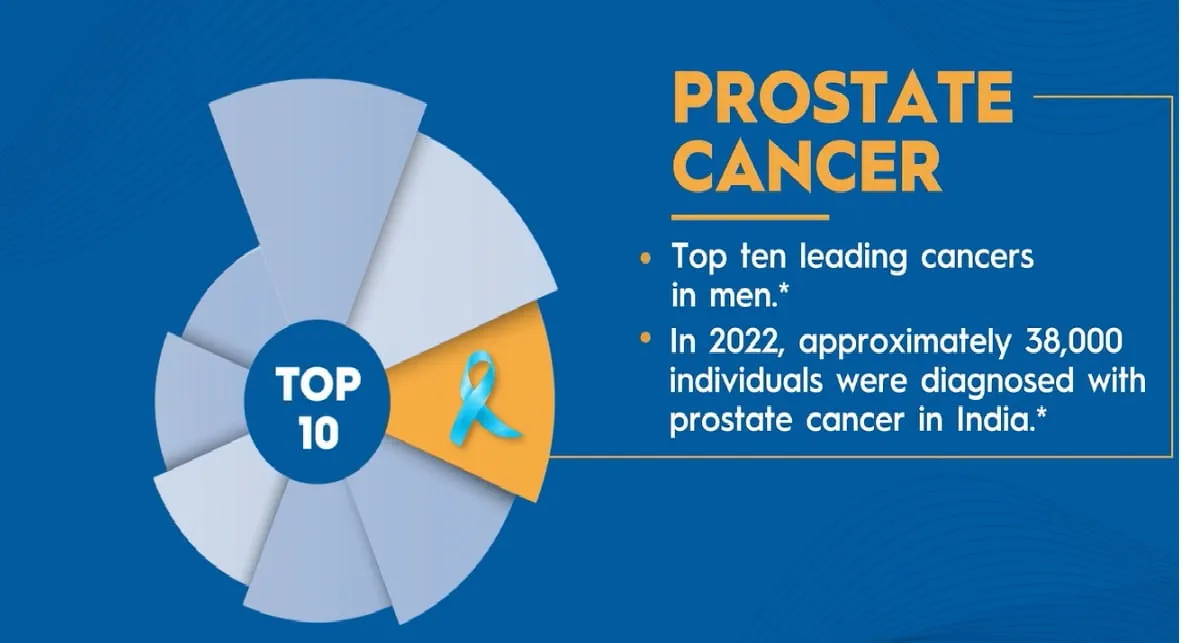EAU 2024: Prostate Cancer Treatment
Indications, Advantages and Disadvantages of Focal Treatment Modalities By R. Sanchez-Salas
Focal therapy (FT) was deemed a promise of the TRIFECTA of radical prostatectomy. TRIFECTA consisted of functional outcomes combined with adequate oncological outcomes, but ultimately, it was unsuccessful. The cornerstone of FT lies in identifying the index lesion. The depiction of this index lesion relied heavily on MRI information, which led to the hypothesis that targeting this lesion could potentially control the disease. However, this remained a hypothesis due to the multifocal nature of the disease and the lack of concrete evidence. The FLAME trial, which compared focal boost to the intraprostatic lesion with whole gland radiotherapy, provided insights. Patients who received the focal boost showed improvements in disease-free survival and biochemical disease-free survival with limited toxicity. As a result, the reliance on MRI information as the cornerstone of FT transitioned from hypothesis to certainty. However, implementing FT poses challenges due to various factors involved. The Falcon consensus was established to address these challenges, incorporating diverse opinions from experts worldwide. Patient selection criteria include life expectancy, absence of contraindications, age, voiding symptoms (which may not necessarily indicate treatment), and the availability of genomic tests such as BRCA evaluation.
The importance of histopathology in the application of FT is emphasized, particularly for intermediary-risk prostate cancer patients with a Gleason score of three plus four. Active selection of patients, including those with indications of active surveillance or a Gleason score of four plus three, should be based on various factors, not solely on the Gleason score. It is noted that all lesions could be treated with several options available. FT should not be offered if MRI is unavailable or the quality is low. PSMA PET-CT is not considered a suitable replacement for MRI in patient selection for FT. The presence of positive biopsies outside the lesion detected on MRI is not a contraindication for FT. FT may be offered to patients with multifocal MRI lesions. If positive biopsies are found in one of multiple MRI-detected lesions, FT should treat the confirmed lesion.
FT is considered a dedicated risk assessment process, similar to other corporate processes observed in alternative options. Decision-making, treatment, and follow-up involve evaluating risks. When comparing FT and whole gland therapy in patients undergoing FT, superiority is observed in risk, potency, and continence, making it advantageous. It is recognized that FT may fail if based on biopsy, but metastasis-free survival rates remain high up to 5 years after treatment. Results indicate significantly better potency and continence in the FT arms, as observed by the Monsoorie team. FT necessitates dedication, accounting for staging and imaging effects, understanding the disease, addressing the prostatic microenvironment, and determining suitable energy modalities. Objective outcomes, including complications, PSA levels, imaging results, biopsy findings, patient-reported outcomes, and functional outcomes, are essential for advancing FT. In conclusion, FT involves ablating the index lesion with some margin, guided by refined indications based on the Falcon consensus. While definitive data on long-term cancer control are still lacking, FT remains a challenging treatment approach due to its reliance on a dedicated risk assessment process.
How Reliable are Imaging Modalities for Focal Treatment? By J. Walz
The lesion identification, location, the type of disease being dealt with, and the extent of the disease can be identified with MRI imaging. These questions are considered essential for FT. A comparison is made between MRI and the gold standard, template biopsy. The focus is not only on what is observed but also on what is missed. It is emphasized that the radiologist's expertise significantly influences the detection of T3 lesions, high-grade lesions, and high-volume lesions. Expertise and quality are crucial for accurately identifying lesions suitable for FT.
Additionally, the operator performing the biopsy substantially influences disease diagnosis. It was demonstrated in a series published during the EAU that the performance of diagnosing the disease is significantly influenced by the operator performing the biopsy. Detection rates varied, with one operator achieving a 50% rate compared to 27% by another. Therefore, quality and expertise are crucial for visualizing the disease and accurately targeting and conducting biopsies. Targeted biopsies aim to improve disease classification compared to systematic biopsies, yet there remains a notable rate of patient upgrades relative to radical prostatectomy specimens—between 10% and 30%. It is cautioned not to rely solely on the grading obtained from a targeted biopsy due to potential discrepancies.
Similarly, template biopsies yield better results but may still result in upgrades in up to 10% of cases. MRI tends to underestimate the true extent of the disease, particularly with higher grades and volumes of disease, underestimating by up to 40% in these cases. Therefore, a safety margin is necessary to ensure that imaging findings are treated comprehensively without leaving disease to chance. Template biopsies allow for extrapolation of disease location based on positive biopsies within the template and the absence of disease in surrounding (margin) biopsies. However, biopsy accuracy has challenges, and the estimations obtained may not align precisely with expectations. It can be concluded that Patient selection for FT and cancer identification is considered key. Template biopsy provides comprehensive evaluation but is not suitable for routine application. MRI is the best alternative, emphasizing quality throughout the process. High-quality MRI acquisition, reporting, lesion targeting, and pathology reporting are essential. Only when these criteria are met is there a potential justification for planning and implementing disease treatment with FT based on imaging.
In a panel discussion, an expert raised a query regarding the preferable approach for achieving the best fusion effect when conducting a cognitive fusion biopsy: performing a transrectal or a perineal biopsy. It was suggested that a good fusion could be achieved with both biopsies, and a more tailored approach was recommended. It was noted that performing a transperineal biopsy might be better for targeting anterior lesions, while a transrectal approach could be easier for other types of lesions. Concerns were expressed regarding infection rates, with evidence indicating lower infection rates with transperineal biopsies. Despite this, the feasibility and safety of transrectal biopsies were emphasized, particularly due to the high prevalence of transrectal machines worldwide. However, an opposing viewpoint was presented, highlighting the importance of considering the cost and potential consequences of antibiotic resistance associated with transrectal biopsies. The argument was made for the adoption of transperineal biopsies as a means to reduce reliance on antibiotic treatments and mitigate the looming threat of antibiotic resistance. The inter-observer problems and their impact on the real value of MRI were discussed in the panel. It was noted that these problems do affect the value of MRI. In Brazil, where there is a scarcity of uroradiologists and reliance on general radiologists, it was emphasized that teaching residents and fostering a critical approach to MRI interpretation are essential tasks for urologists and the European Society of Urology. The importance of not solely relying on radiology reports but rather analyzing the MRI exams oneself and seeking second opinions was highlighted. However, the availability of second opinions is limited, particularly in underdeveloped countries. The potential role of AI in MRI interpretation was also discussed. It was suggested that AI will become a fundamental tool for image interpretation across various imaging modalities, including MRI and CT. This advancement is seen as a means to mitigate the issue of operator dependency in medical imaging and improve diagnostic processes' overall quality and reliability. The question of whether the current PSMA PET CT allows metastasis-directed therapy (MDT) in oligometastatic disease was raised during the panel discussion. It was noted that previous studies were conducted without PSMA PET CT, but with its availability now, the discussion revolved around whether metastasis should be treated alongside the primary tumor. It was suggested that PSMA PET-directed local therapy could offer higher accuracy and potential efficacy. It was further proposed that trial results should be revisited or the focus should shift to using the most accurate imaging for local therapy approaches in oligometastatic disease. Additionally, it was recommended that staging patients in the oligometastatic disease stage before considering MDT should be standard practice in clinical settings, ensuring the highest accuracy for targeting.
The last question was regarding the techniques for improving therapy and lowering detection problems based on MRIs, targeted biopsies, and deficiencies. The use of surgical techniques such as HIFU or high-intensity focal ultrasound for FT was asked about. It was queried whether any actions were taken to counter or improve these deficiencies. The response emphasized the importance of MRI information for diagnosis and treatment guidance in FT. It was suggested that FT should utilize treatment guidance software, such as fusion devices, transparently for diagnosis and treatment, highlighting the importance of including security margins.
European Association of Urology (EAU) Annual Congress 2024, 5th April - 8th April 2024, Paris, France




